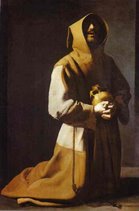
(Reviewing a performance with original cast, Kay Mazzo and Peter Martins) Watching them listen is a theatrical experience in itself. Their faces share a multitude of unknown thoughts, but the intensity and sweet concentration with which they listen suggest that the notes are running through their bodies. Finally, they are moved to dance. At first they stick closely to the music’s beat, almost ‘conducting’ it with arms and legs; torsos are still. Becoming more free, the dance turns into a melting duet, each phrase winding down on slightly bent knees, as in a whisper. They dance with seeming spontaneity. Even when Balanchine arranges an unusual means of partnering – as when he scoops her from the floor holding only the underside of her thigh – the movement spins off them with utter simplicity and naturalness. In other sections, they occasionally stop dancing to listen. At those times, Martins firmly takes hold of her hand or slips his arm around her waist. She is shy, but the music pleases her and so does he. She does not move away. They listen in repose, arm in arm.
In the last part dancers and musicians go their separate ways. The stage darkens. A spotlight falls on the pianist and violinist. Another one lights a small area in which the dancers will play out their final drama. Mazzo paces her arm in the light, so that it seems to exist independently of her body. Martins hastens to the arm and links his with it. He then embraces her, sinks to his knees, and feels her face with his hands. She steps out of the light; then he does. She comes back and again extends her arm into the light. He rushes back, kisses the back of her hand with hushed passion, and sinks to the floor like a supplicant before a goddess. The jump from youthful hand-clasping to ceremonial hand-kissing is brazen for its staginess and unexpectedness. But out of that staginess come certain truths; in fact, the ending is an exquisite confession of them. It intimates that music transports Balanchine into a fantasy experience. It declares that to Balanchine, the female dancer is an image of love, a Muse-ballerina who inspires but is unreachable. The worshiper is the male, whose fate it to be indelibly inspired, possessed but not possessing. It is the story of Balanchine’s art.
Chicago, Oct 19th, 2006 Matinee, NYCB
Oct 20th, Evening
On second viewing, I realized that Hubbe seemed to be leading with his upper torso in turns, creating a twisting motion that accounted for the "bull in a china shop" affect. Borree's positions were lovely and clear, but I missed the sense of a "welling-up of movement." This lack of dancing, combined with Hubbe's strange approach, made the ending startlingly strange, as one never had the sense of the relationship between the two dancers, and the relationship to the piano and violin was also dulled. Someone also needs to tell Hubbe not to lean over the piano after his variation - it makes him look extremely tired.
I reviewed the State Ballet of Georgia's performance of Duo Concertant in February 2008 here.
(First picture is Yvonne Borree and Peter Boal; second is Borree and Jared Angle)


No comments:
Post a Comment